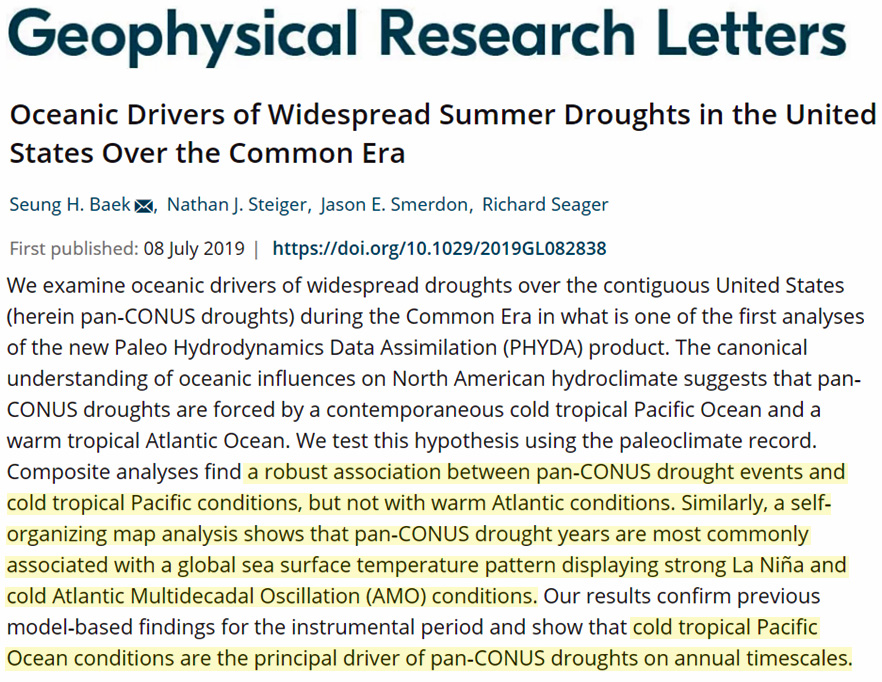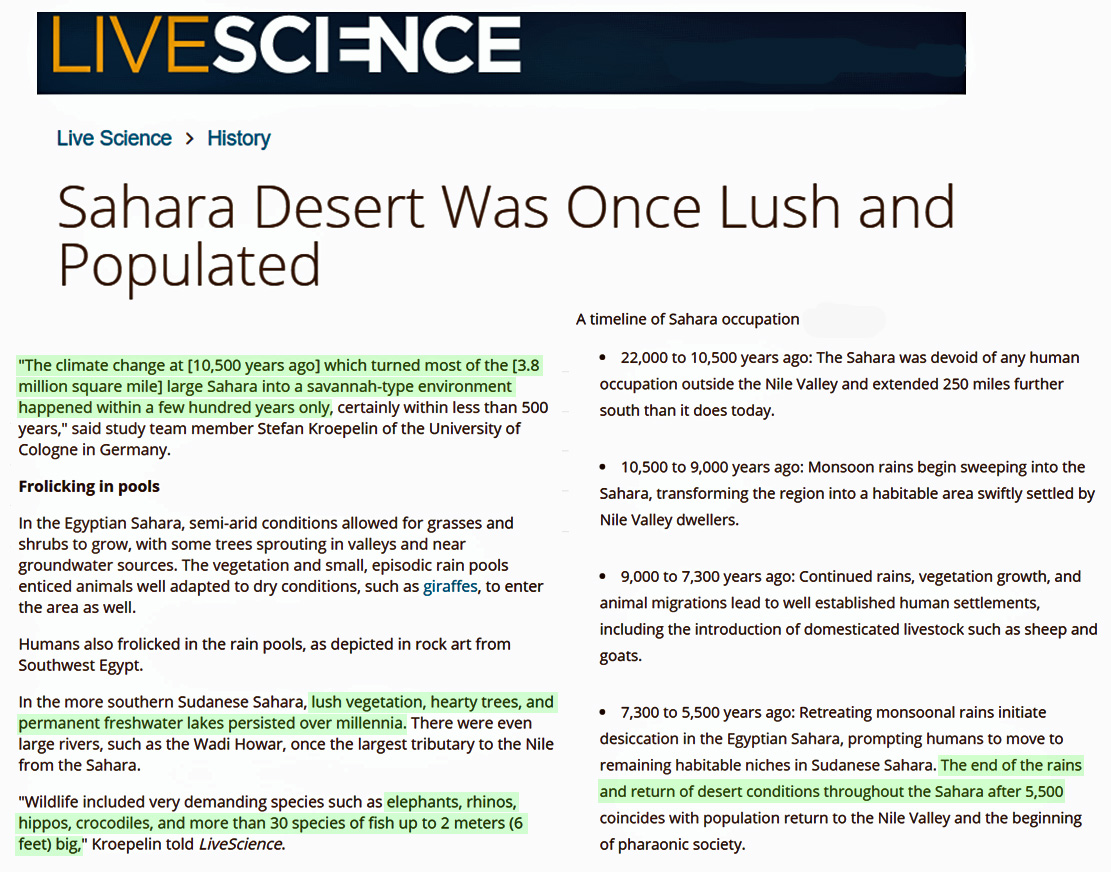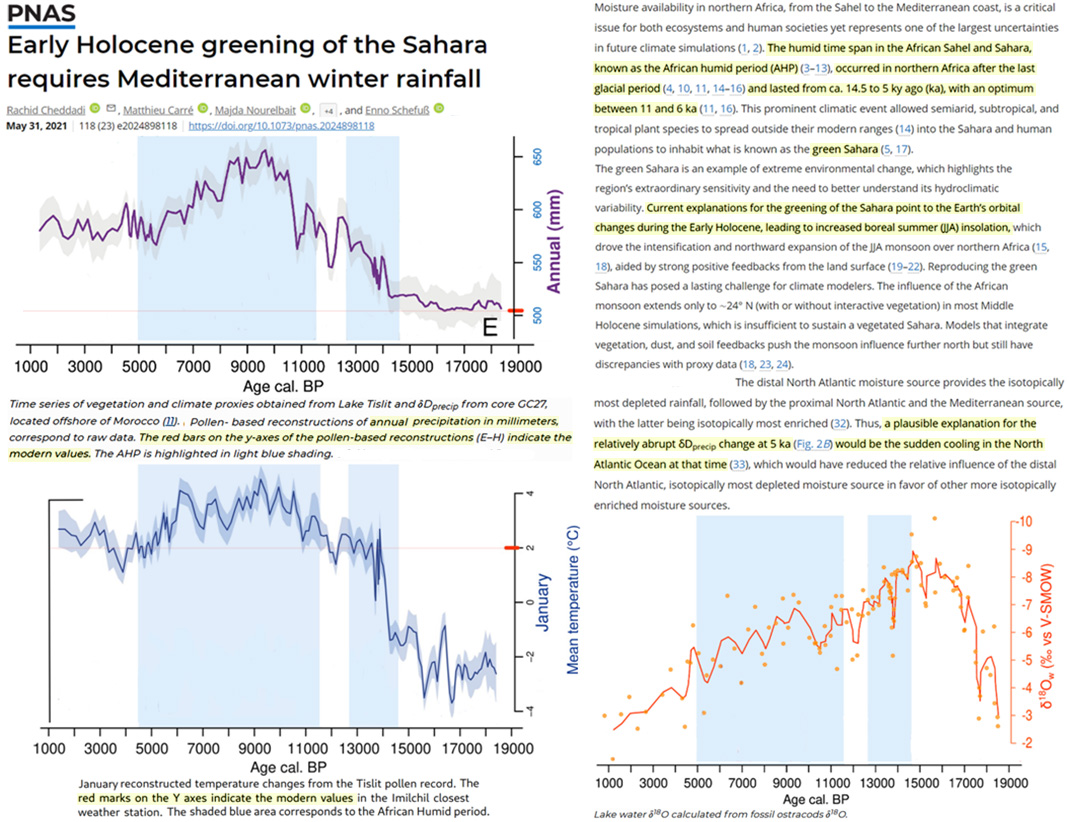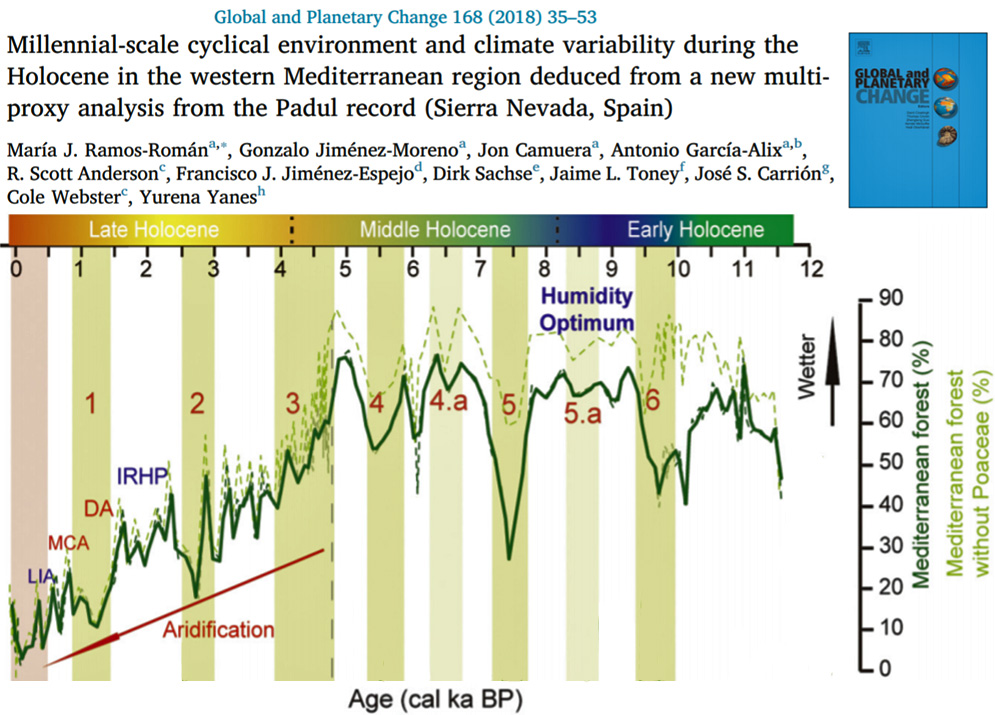If wetter is warmer and drier is colder, the modern Saharan climate suggests we are not in a warm period.
It is common knowledge that warmer temperatures are associated with wetter, greener climates, and cooler temperatures are linked to droughts, browning, crop failures, etc.
For example, in the continental US there is a “robust association between pan-CONUS drought events and cold tropical Pacific conditions” (Baek et al., 2019). Again, cooling sea surface temperatures are the “principal driver” of drought across the US.

Image Source: Baek et al., 2019
During the Green Sahara period or African Humid Period which spanned from 14,500 to 5,000 years ago (peaking from 11 to 6 thousand years ago), a much warmer northern Africa was teeming with lakes, fish, grasslands, megafauna, trees, and human civilizations.

Image Source: LiveScience
About 5,000 years ago the regional Saharan climate steadily cooled, and this post-Mid Holocene cooling is significantly linked to the habitat-destroying desert conditions that exist in Northern Africa today.
According to a 2021 study published in PNAS, today’s temperatures in the Saharan region are the coldest of the last 13,500 years with the exception of a few centuries centered around 4,000 years ago.
And, correspondingly, the aridity in this region is worse today than anytime in the last 18,500 years, or since the peak of the last glacial, when CO2 was under 200 ppm.
Hyper-aridity in the modern regional climate is not consistent with claims we are now experiencing a period of exceptional warmth. The opposite, actually.

Image Source: Cheddadi et al., 2021






[…] The Sahara Is Green When Warm, Desert When Cold…And It’s Drier Now Than The Last Glacial… […]
There’s an old saying, “Prediction is always difficult, especially when it involves the future !”, however there is an interesting potential situation building; if we assess the current Oceanic Nino Index “ONI”, combine that with the current Cycle 25 behaviour we can see the potential for a repeat of the cold winters of the 2010/2013 “snowmageddon” period. Like I said, I never make forecasts, only observations. If we combine that with the current energy situation it can look a bit scary !
Anybody else see the situation ????
[…] Related: The Sahara Is Green When Warm, Desert When Cold…And It’s Drier Now Than The Last Glacial Maximum […]
See here…
https://m.youtube.com/watch?t=212&v=z_OjGxrlloE&feature=youtu.be
…from 26:47 to 27:50. Basically, Ice core data indicate that warmer=wetter and (obviously) colder=drier.
Well, at least it SHOULD be “common” knowledge. Sadly, propagandists either don’t know or pretend not to, because it’s easier to manipulate an uninformed populace.